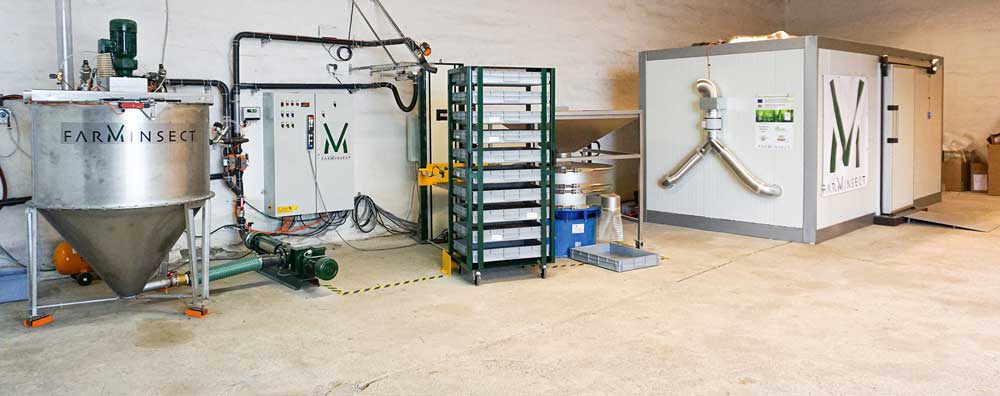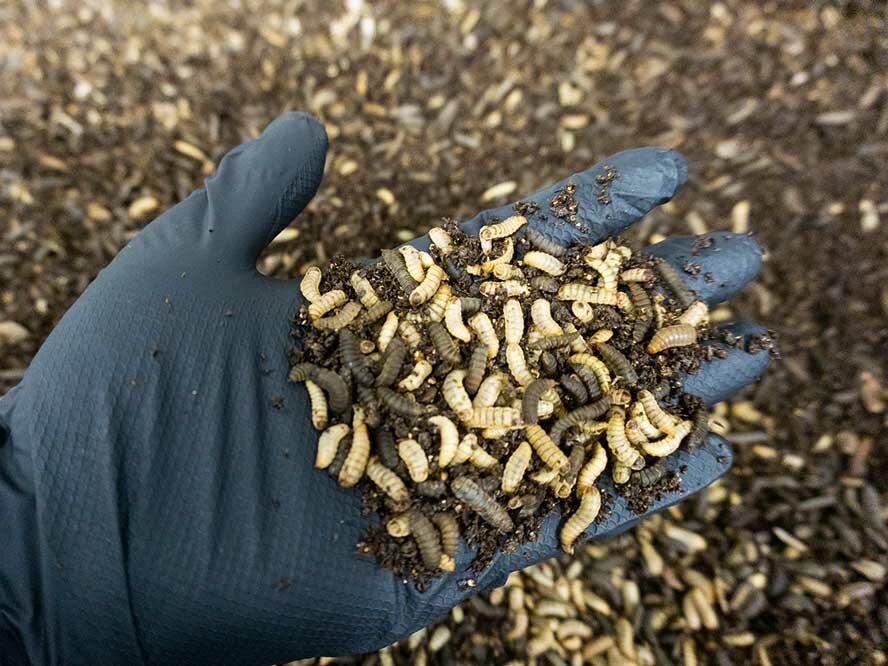Larvae for animal feed
By Katharina Hesselbarth, DLG Mitteilungen
Sustainable and regional production, circular economy and animal welfare: these are also the goals of the founders behind the start-up "FarmInsect". "Soy and fishmeal are mainly used as protein feed, 90% of which has to be imported and brings along some problems," says founder Thomas Kühn. In addition to the high dependency and thus possible supply bottlenecks, the Munich native is particularly critical of the environmental consequences. "Many fishing grounds are overfished. And the cultivation areas for soy are also limited. In addition, there are long transport routes," says Kühn.
Together with two other founders, he launched the company in 2018. In 2017, insects were approved for feeding pigs, chickens and fish. "Currently, insects may be fed live to all three animal species. For fish, there is also already approval to use insects in a processed state, for example as pellets. We expect this approval to come later this year for chickens and pigs as well," says the founder.
Protein feed from fly larvae
FarmInsect uses the black soldier fly. This is because the aim is a regional circular economy and thus the use of residual materials as a feed base. In the meantime, the company has gained good experience in numerous trials as to which subspecies of the insect and which feed mixtures go particularly well together and enable highly efficient protein production.
Optimally, farms interested in feeding the larvae set up the production plant in an old building, for example. The facility consists of a mixing pot, the feed conditioner, a robot that empties larval boxes onto a screen and brings them under the feed conditioner for refilling, and climate chambers. The young larvae are resupplied weekly by FarmInsect. They can be adapted to the respective feed substrate, for example. The larvae are placed in the climate chambers together with the substrate, which contains food and water for one week. A computer monitors humidity, temperature and CO2 content in the chambers and adjusts if necessary. Harvesting" can then take place once a week. This week, the insects have increased their weight by a factor of 250.
Recycling waste beneficially
The size of the plants varies between 250 and 875 tons of larvae/year that can be harvested. Residual materials such as bran, vegetable residues or old bread can be used as feed. But grass or low-grade plant residues are also possible. "A plant with 250 t annual harvest is worthwhile for farms that keep about 1000 pigs or 5 to 10000 chickens. Depending on how high the proportion of larvae in the feed mix should be," says Kühn.
Various recent studies have shown that feeding live larvae also has advantages for animal welfare. For example, tail biting and feather pecking decline. "This simply corresponds more to species-appropriate, natural feeding," Kühn is convinced. He thus sees only advantages in the use of insects: For the environment, the farmer, who can produce high-quality feed from waste, and not least for the animals fed with it.





